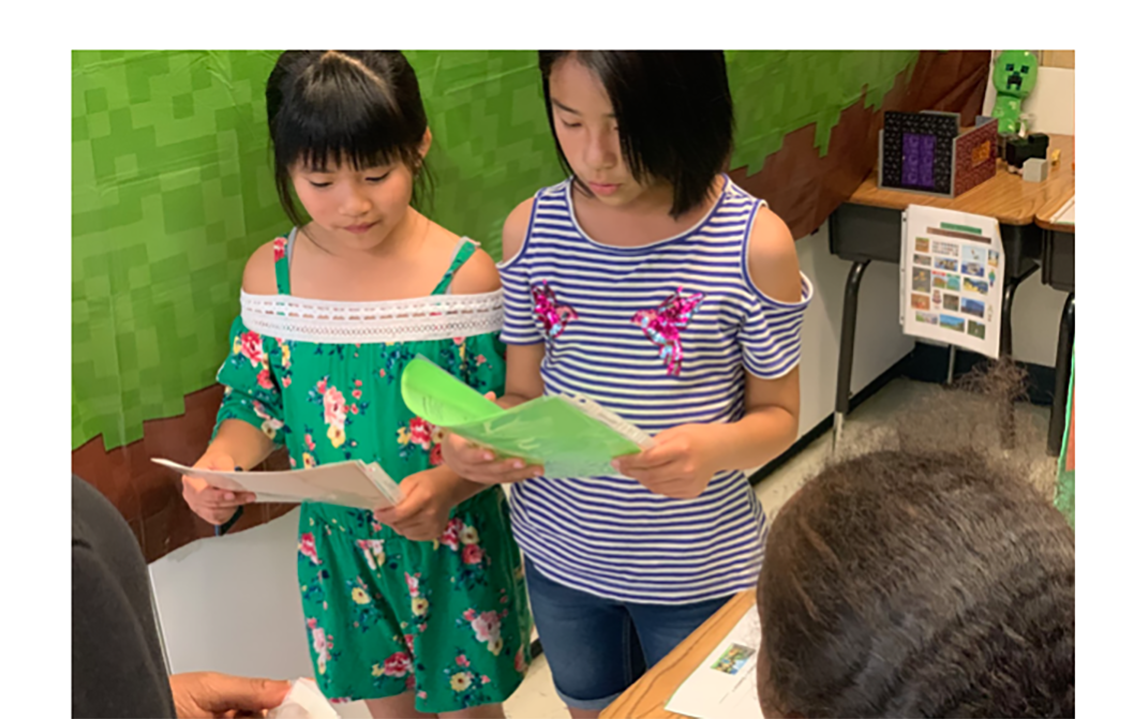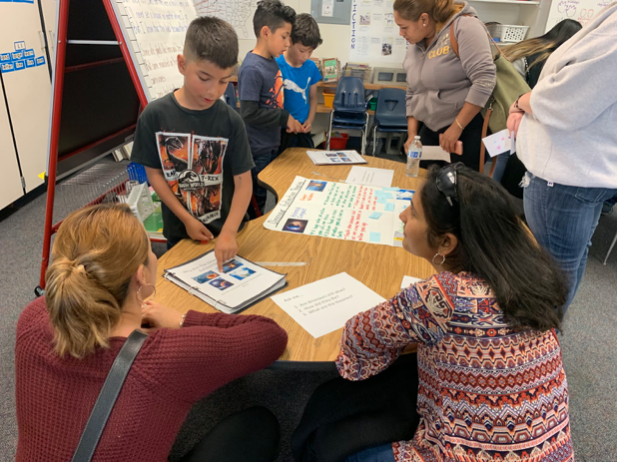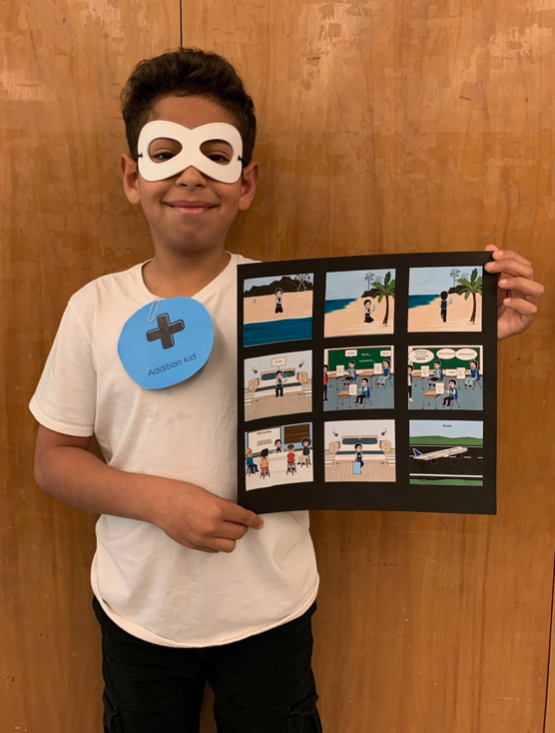
Each year in the spring, like most schools around this country, we prepare for and take “the test.” Some traditional schools see this as the end goal, the pinnacle of the year, but at my school we believe there is an even more important event that happens in May: Exhibition Night! This event replaces a traditional Open House and does away with passive parents walking through their child’s classroom, looking at only their work, checking things to see off of a checklist. It’s a chance for parents, community members and partners, neighboring schools, (and even some PBLWorks staff) to congregate on our campus to see almost all of our 530 students sharing their learning and project work—all on the same night! Sounds exciting, right?
We know that public product and authentic audience are key components in high quality Project Based Learning, and the deeper learning community believes that all students deserve to exhibit their work in an authentic way. When done right, we see students beaming with pride, transferring their knowledge to new applications, and realizing they can soar even higher than they previously thought. It’s the secret sauce.
But with all the focus on students, we often don’t consider the adult experience. Exhibition Night is stressful! How do we coordinate all of these grade-level projects into one cohesive event? What if people don’t show up? What if we open our doors and it isn’t as amazing as we’d dreamed? What if students haven’t created beautiful work?
These fears make sense, so there are a few things I’d like you to consider based on our experience at Katherine Smith Elementary School.

Designing Builds Professional Culture
Early in our PBL journey, Dr. Gina Olabuenaga, then a National Faculty member and now director of curriculum at PBLWorks, helped us establish our vision for what Exhibition Night could be. She used a “Back to the Future” protocol and asked us to write narratives as if the event just ended, describing in great detail how and why we were so elated with the outcomes. We then shared them with cross grade level triads and our partners listened for key details. In the whole group share out, we determined non-negotiables for the evening, we worked through logistics, we shared our fears and excitement. We created a sense of shared ownership and professional culture that exists to this day... and the event hadn’t even happened yet!
Embrace the Chaos
The week before exhibition will be crazy. There will be glue and paint all over the place and your students will be moving at breakneck speed to put on finishing touches to displays, props, sets, signage, etc. Your colleagues will be feeling the same way, but take advantage of the shared experience. What a perfect opportunity to build empathy with one another, to share your expertise in supporting the projects in other classrooms, and collectively reflect on how you may design the project more intentionally the next go around.

Don’t Hide the Failures
As teachers, we want all students to experience success, especially when sharing work with their families. While we do need to consider and plan scaffolds for the project deliverables for our students, don’t feel like you have to hide the uh-ohs, the incompletes, or the not-good-enoughs. Our pride as teachers makes us want to take full ownership over a student or group that presents incomplete work, but remember, building resilience requires discomfort. It may require acknowledging disappointment in lack of effort. We need to let students experience these feelings and make sure they know they will have another chance to improve with the next project.
Connect Parents with Purpose and Process
There is no better way to make parents feel connected to your school than opening your doors. Send flyers and emails home to let parents know why it’s so important they attend. Create structures where parents and visitors are encouraged to see more than just their child or group. Have students wear stickers that prompt visitors to “Ask me about...” Make sure you include feedback opportunities in multiple languages because Exhibition Night is not just about demonstrating learning, it’s about educating the community about Project Based Learning and showing them why our children need to learn this way.
Exhibitions are scary, but I encourage you to take the risk. Some will be better than others, but as adults, we need to embrace the “ideal graduate” outcomes we want for our students and trust the process. We need to walk the walk and be public. Trust me, it’s worth it.

